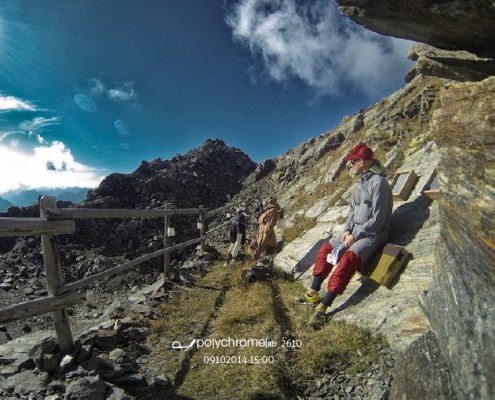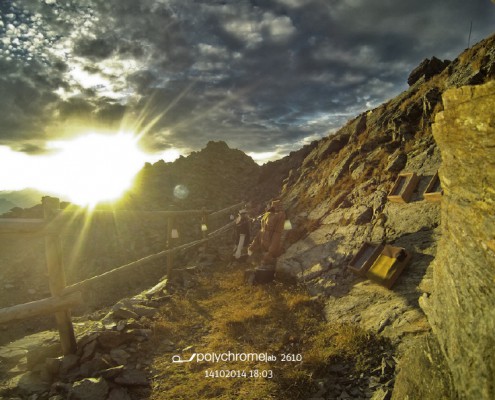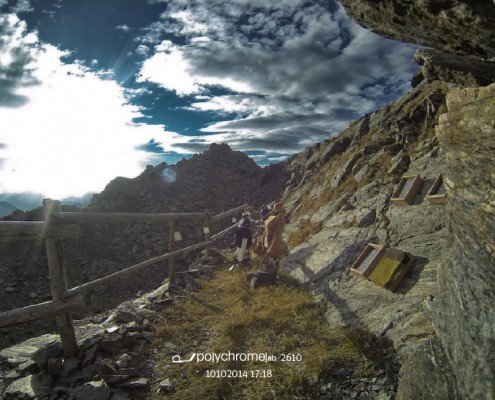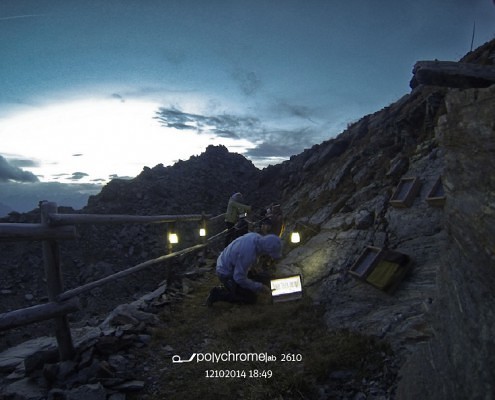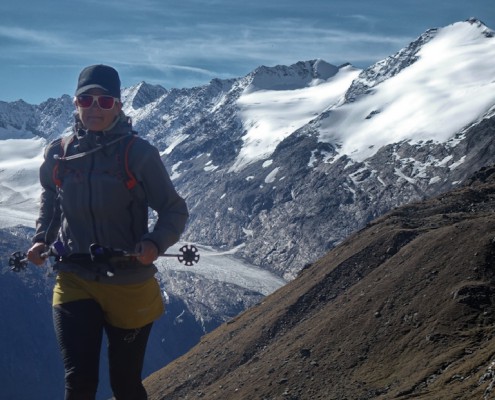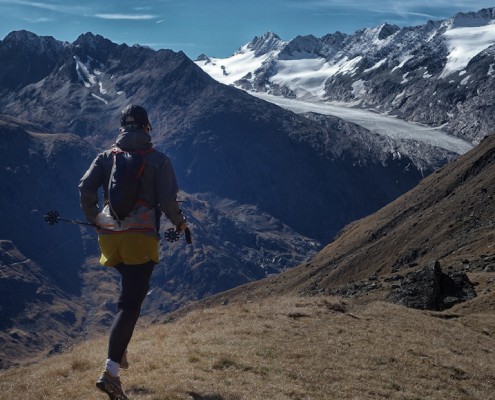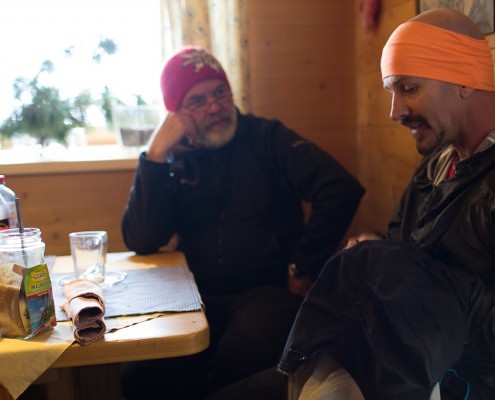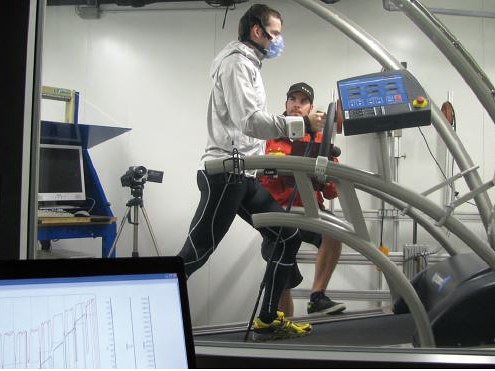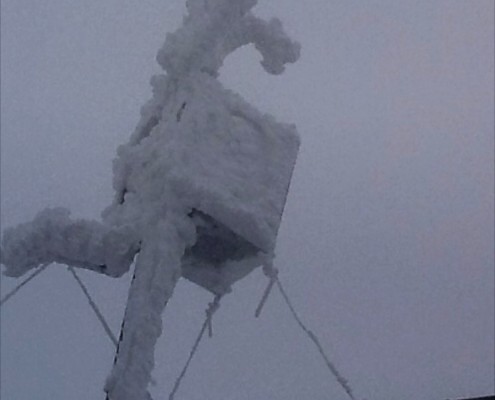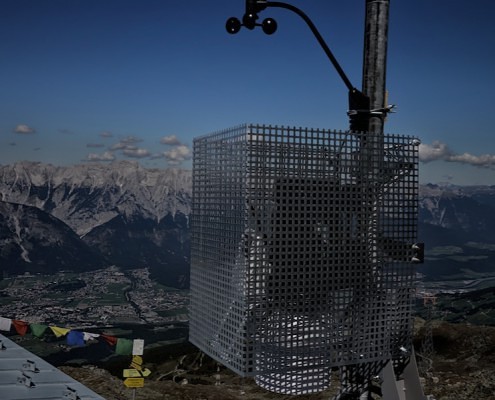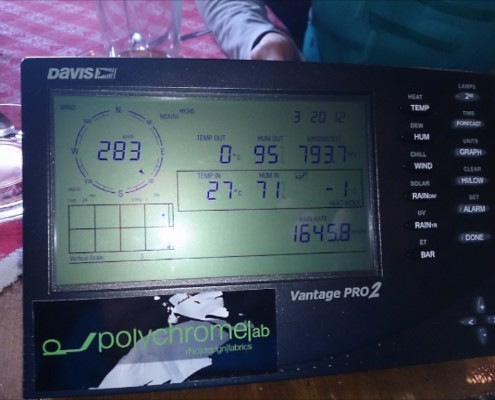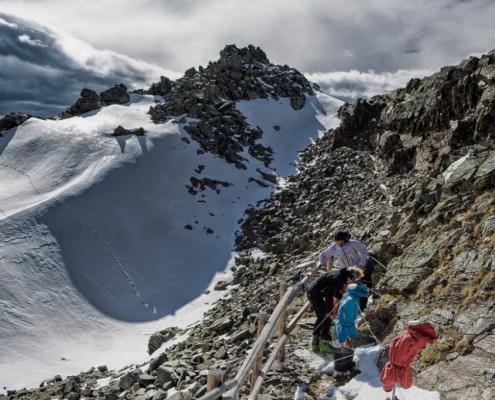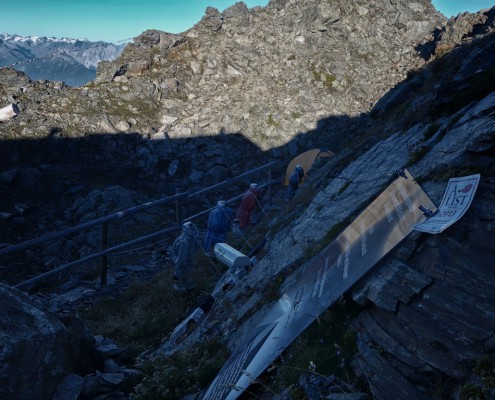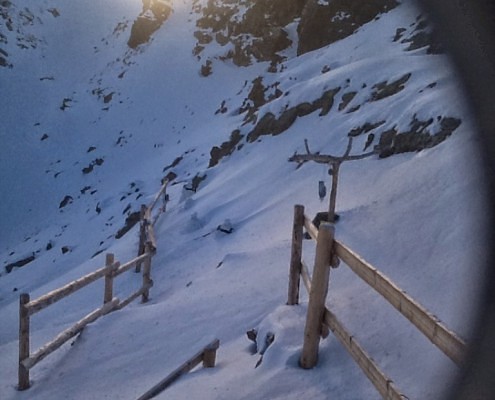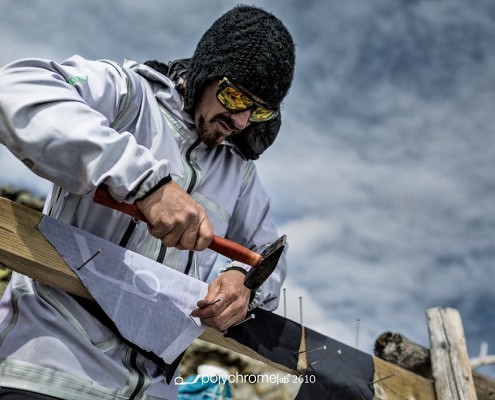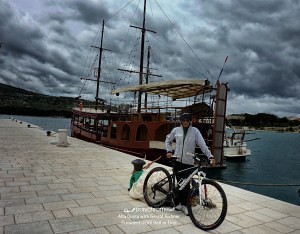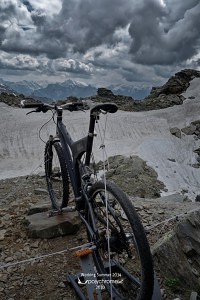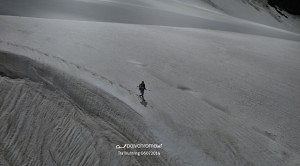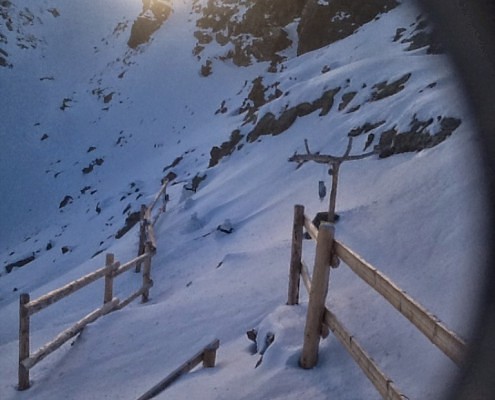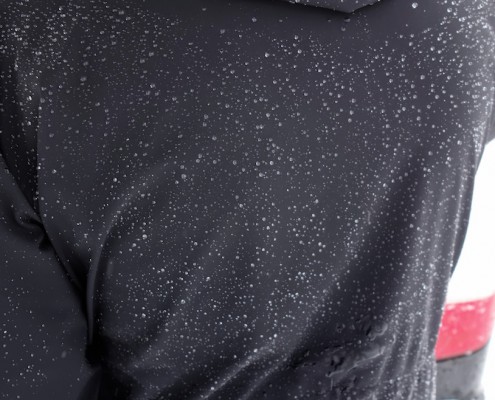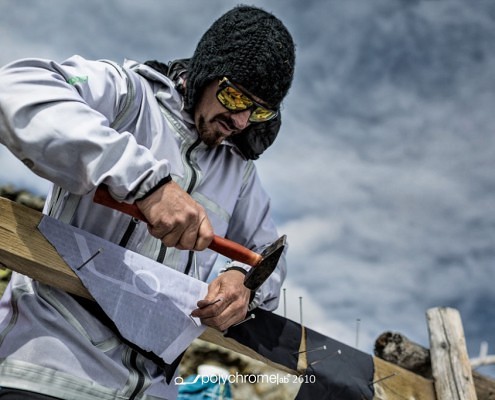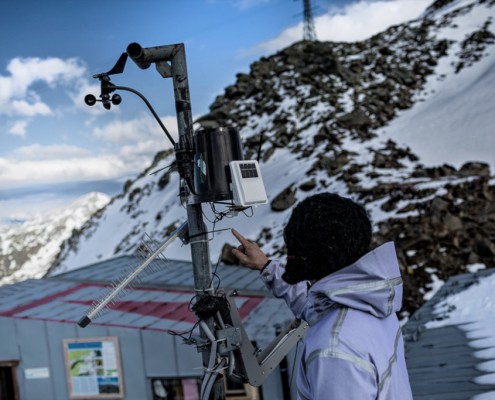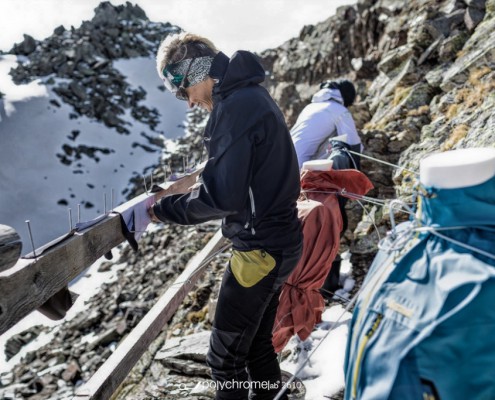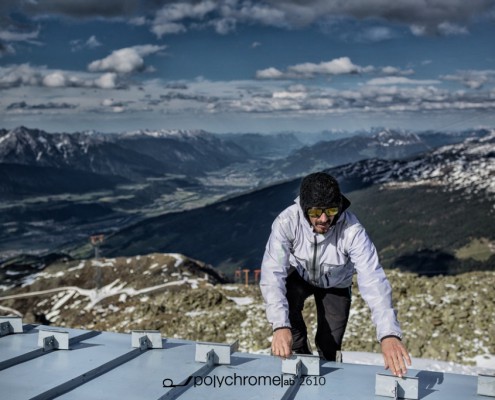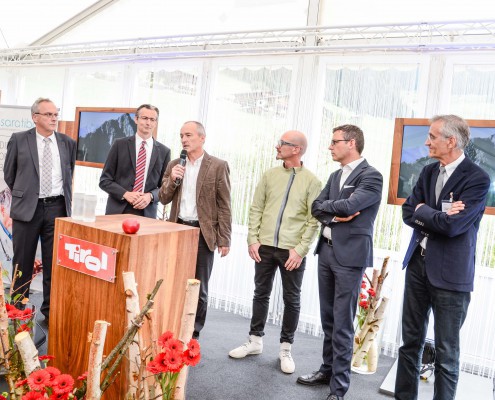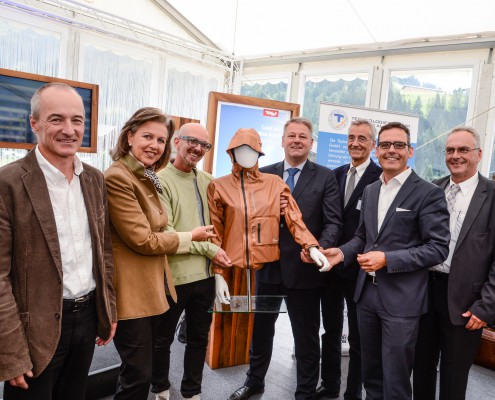High-Tech Jackets tested in extreme Outdoor Tests
Do high-tech Jackets keep their Promises?
Nowadays high-tech jackets have to stand up against nearly everything: they should be waterproof, windproof, stretchy, sturdy, hard-wearing, warming. light and looking good. Additionally one has to add to each one of these functions an attribute like “extremely, 100%, highly, maximum, optimal” to tag a high-tech jacket. Producers make many promises, but most outdoor jackets have to work for the first time, when the customer allready has bought the jacket and is wearing it in the mountains. If a jacket shouldn’t be a 100% waterproof then, one’s smitten.
Therefore the inventor of polychromelab reversible jackets, Michele Stinco, had the idea to test jackets under extreme alpine conditions, before it is available on the market.
High-tech Jackets tested in Tyrol
This is, how an original polychromelab-jacket-extreme-test looks like in practise:
Firstly, fabrics get spaned on wooden boards. Installing sensors we detect whether the fabric is suitable for outdoor use or not.
If the fabric is ready for manufacture, we design a reversible jacket. This prototype then is worn by dummies in our alpine laboratory at the Glungezer in Tyrol. Again we install sensors. Additionally we prepare a webcam to watch the jackets day and night for some months. Here you’ll find out what kind of weather high-tech jackets have to stand in our textiles research laboratory.
Then we evaluate the collected data. This way we’re able to detect waterproofness, windproofness and breathability by the means of temperature curves, humidity measurements and so on. By visual examination we can see, if outdoor jackets have been damaged by wind and weather or at seams and skirts.
If the prototype passes this test, we send it to the textile laboratory at the University of Innsbruck, where elasticity, scrub resistance and colour intensity get scientifically proven.
But there is one last test in our polychromelab 2610 alpine lab for the prototypes: the high-tech jackets get proven at applied extreme sports tests, like trailrunning, skiing, climbing and so on. Only this way one can proof what outdoor jackets have to be suitable for.
Alpine Proof – the Future of Outdoor Gear
Prospectively the project Alpine Proof will create an alpine seal of approval for outdoor gear to award high-tech jackets, which passed tests consiting of a combination of applied and scientific examination.
A true high-tech jacket doesn’t leave somebody out in the rain alone, but protects against wind and weather like a friend. High-tech jackets by polychromelab are available in our online shop.
polychromelab concept store

